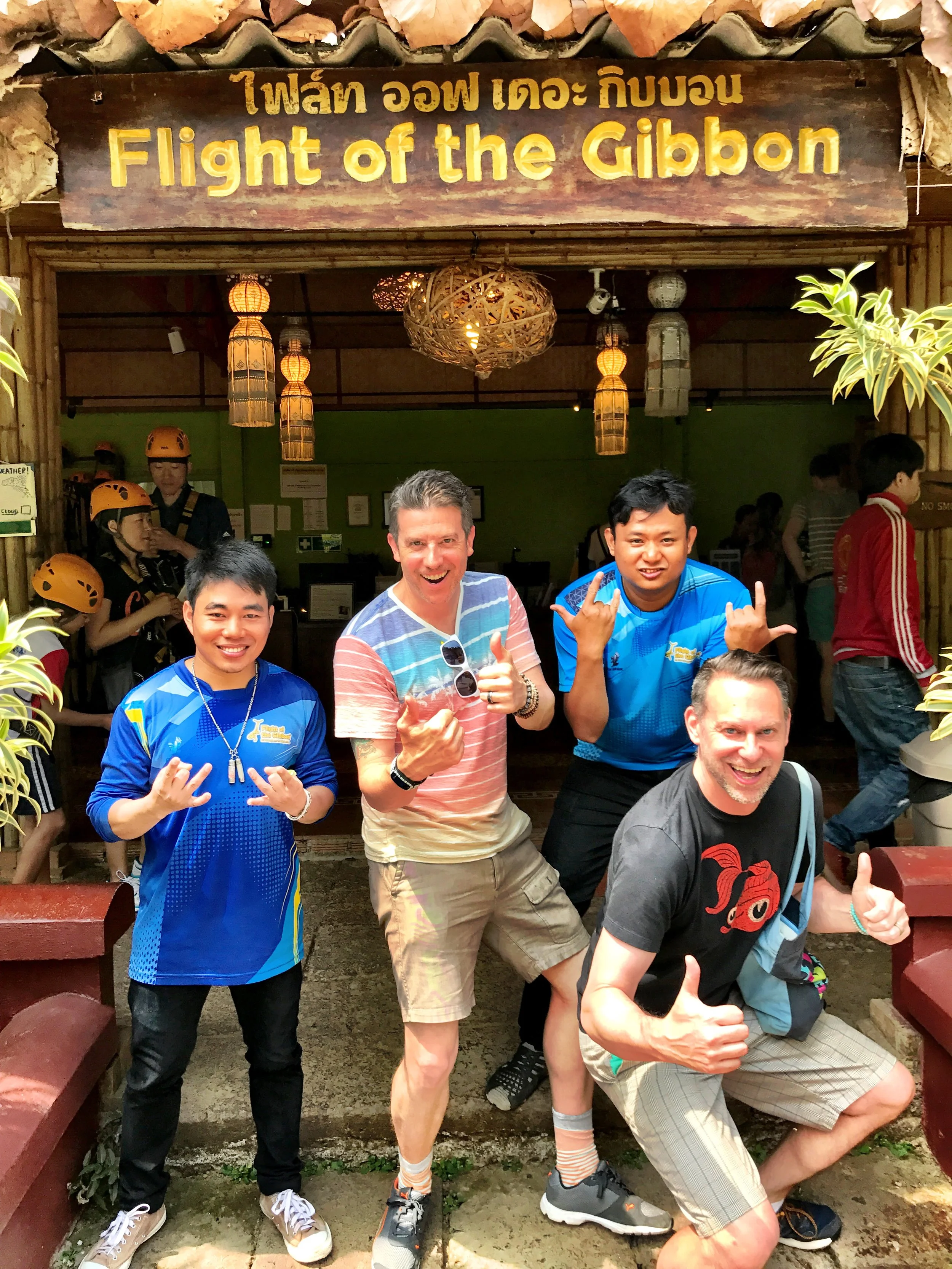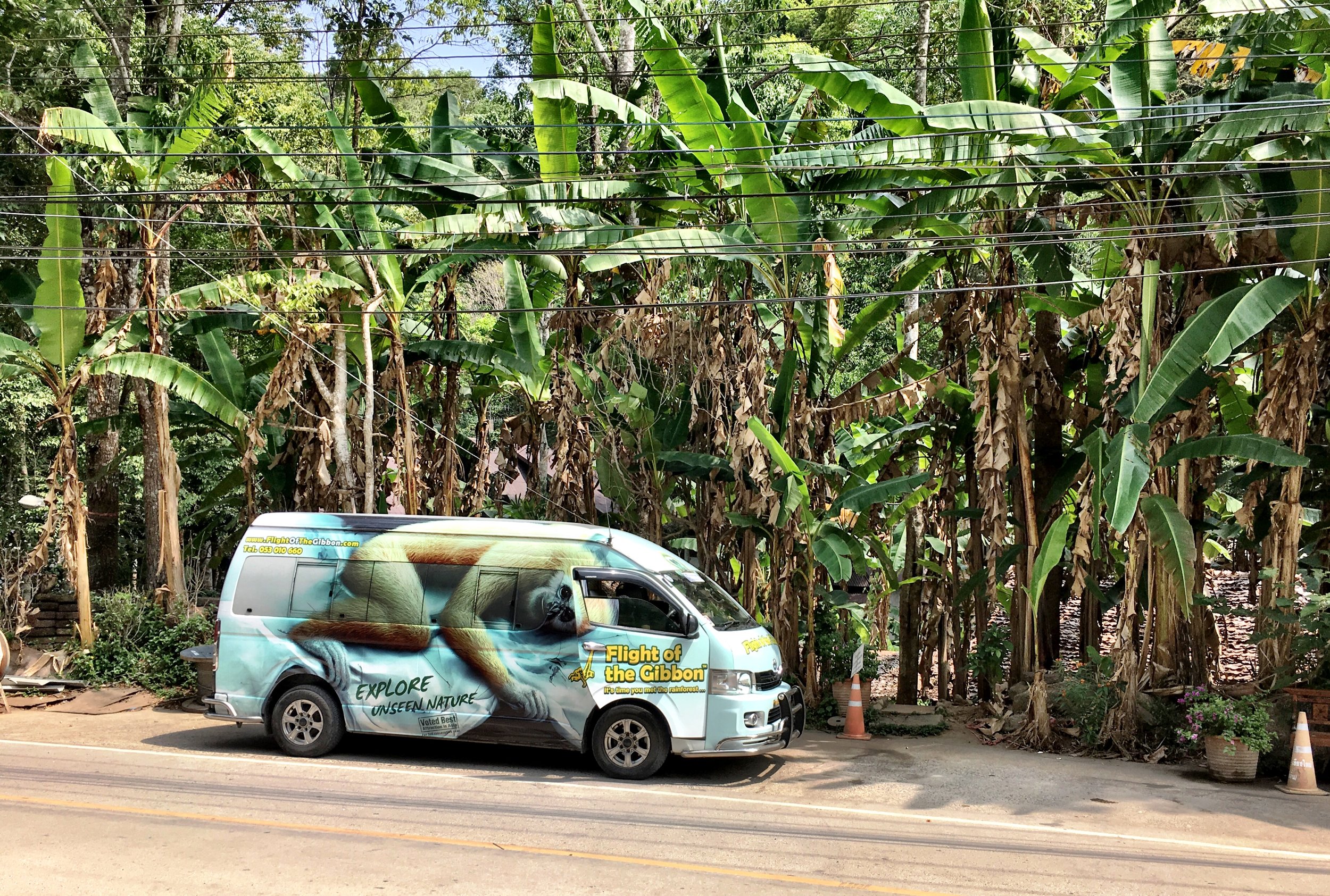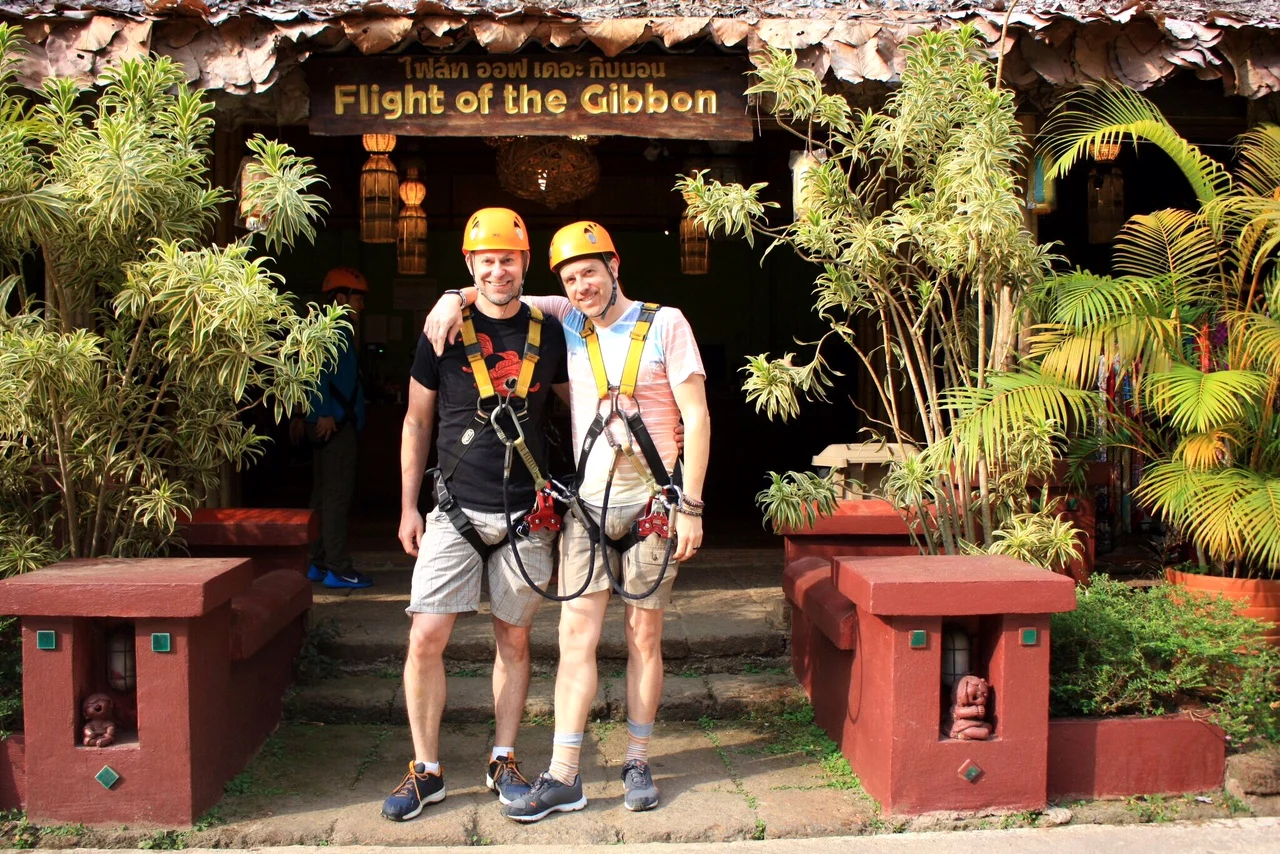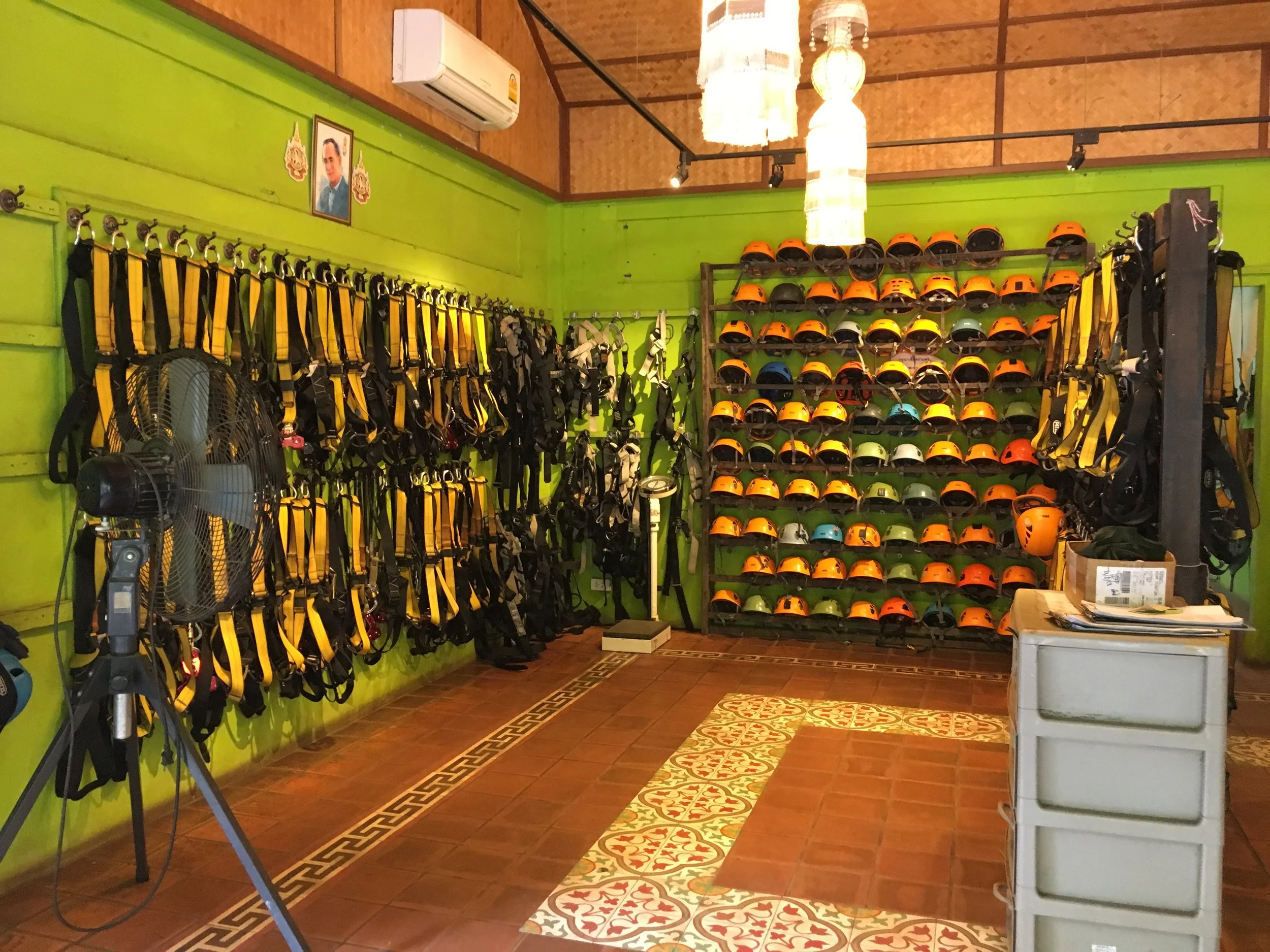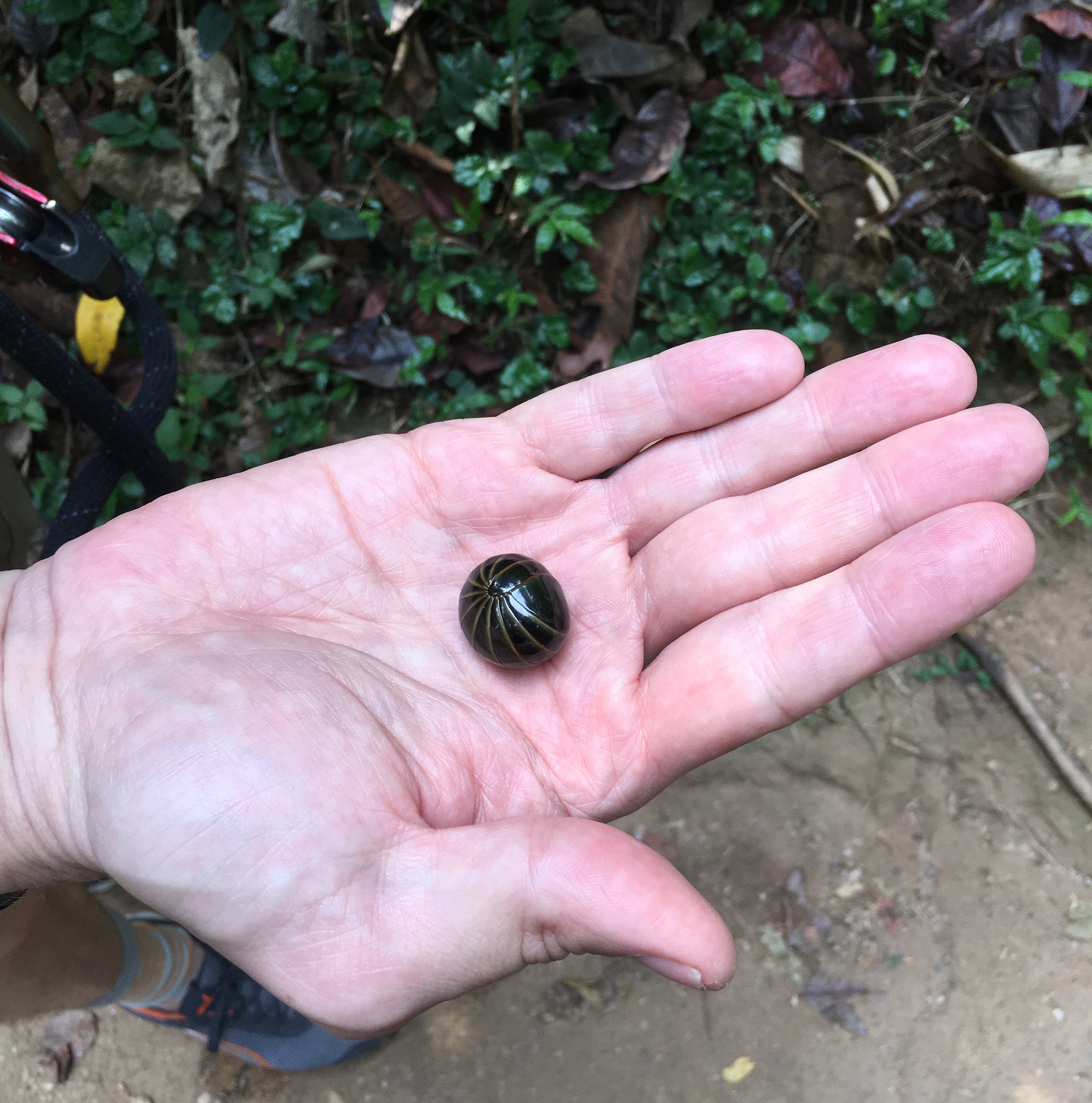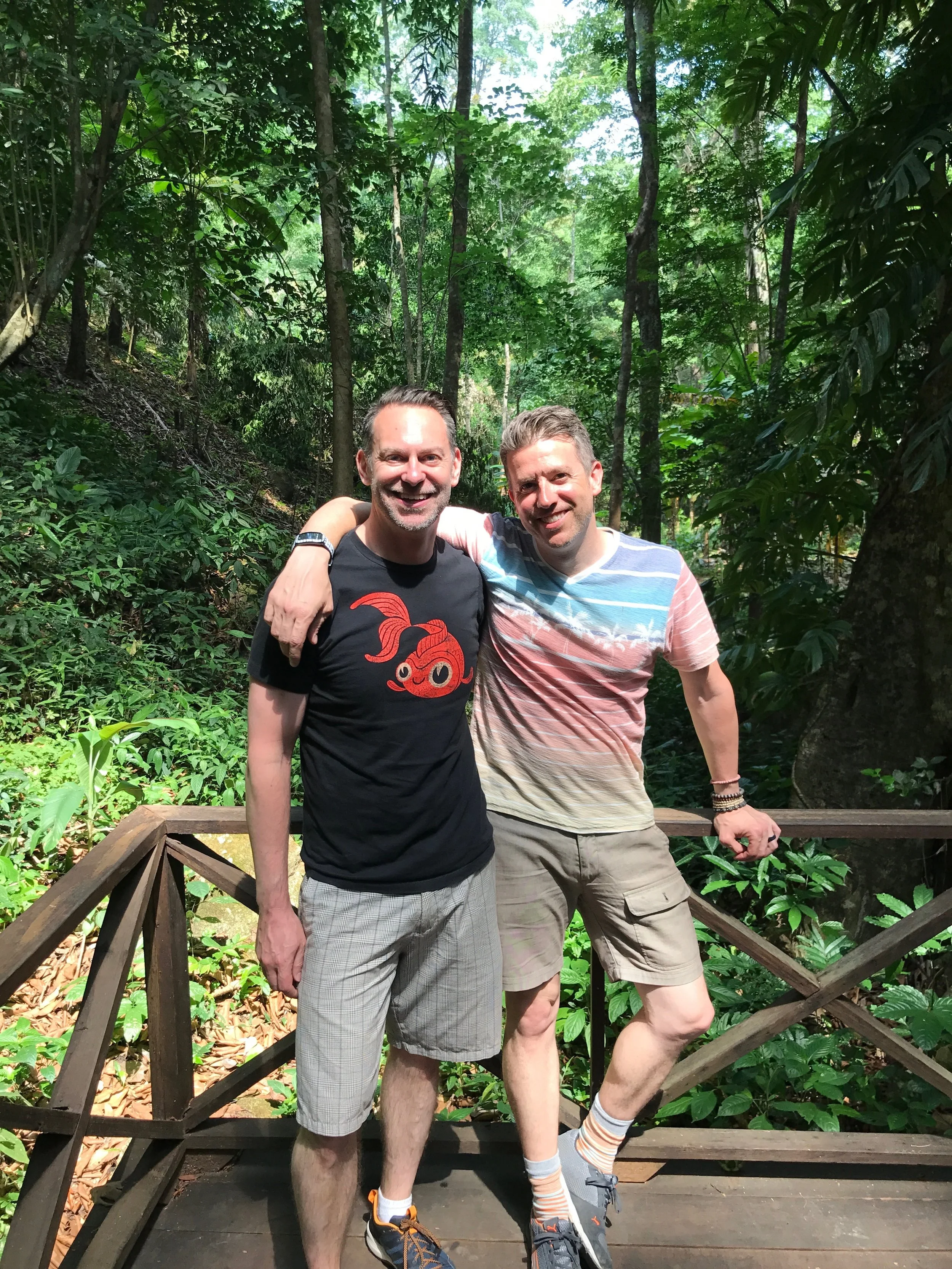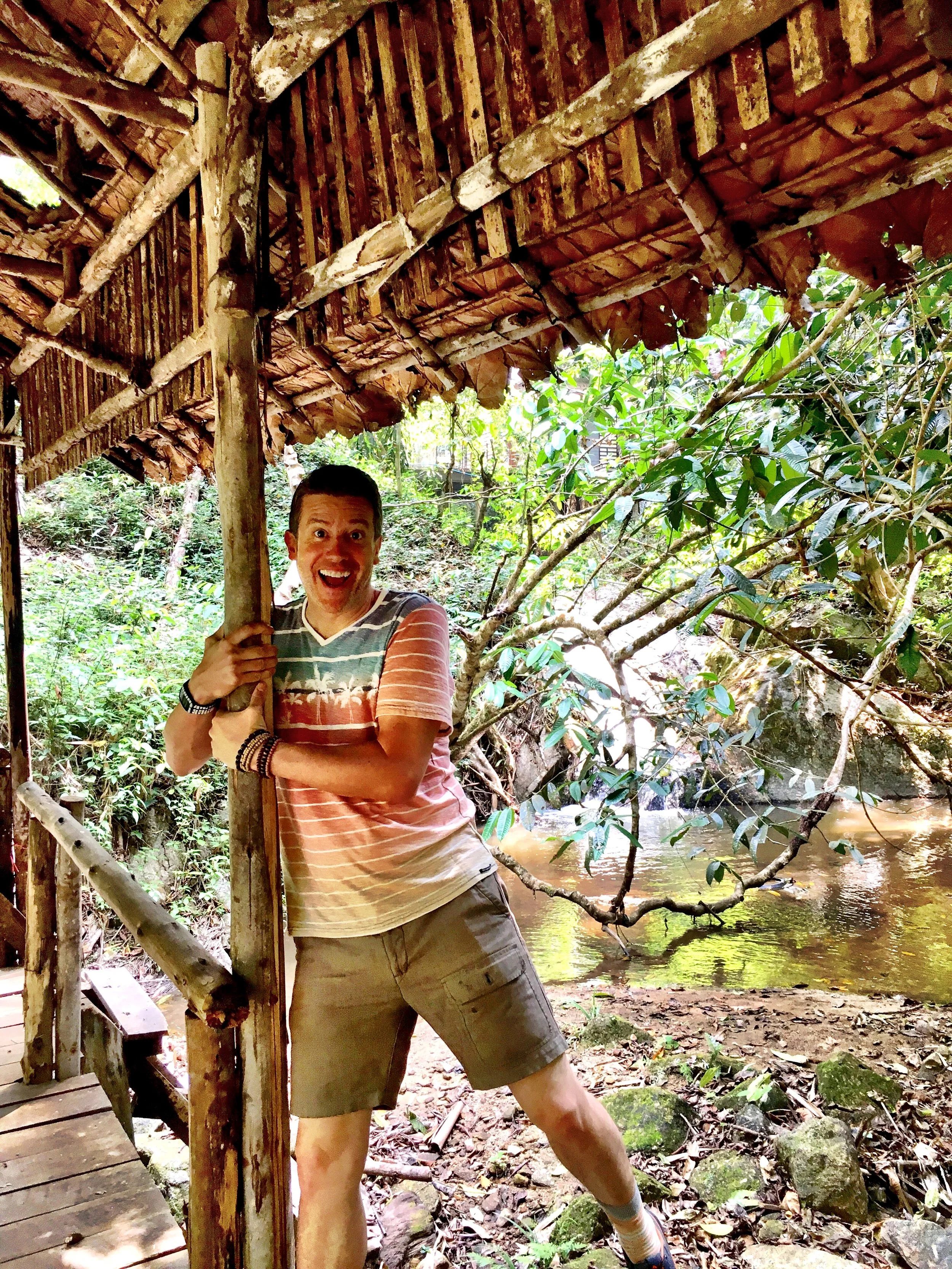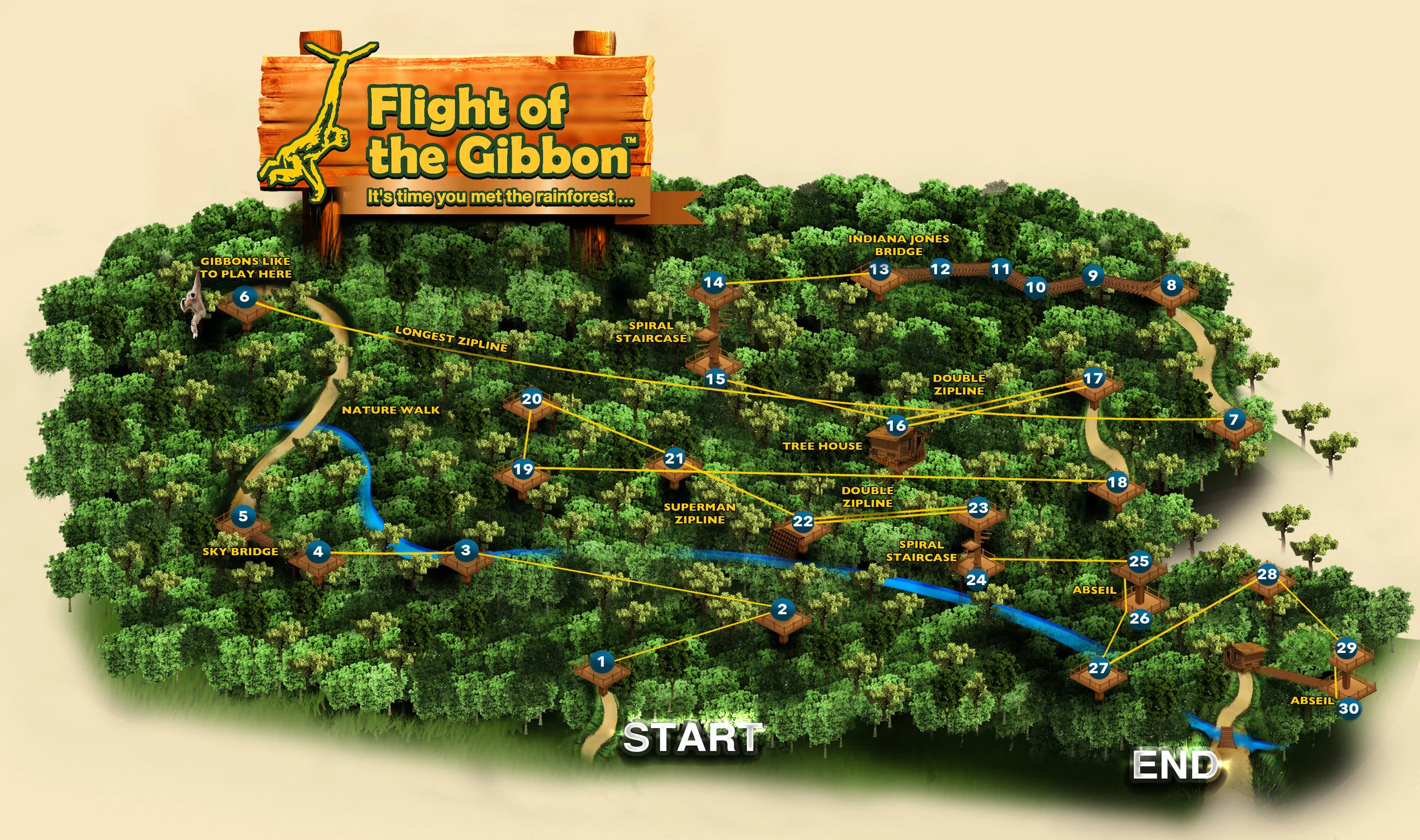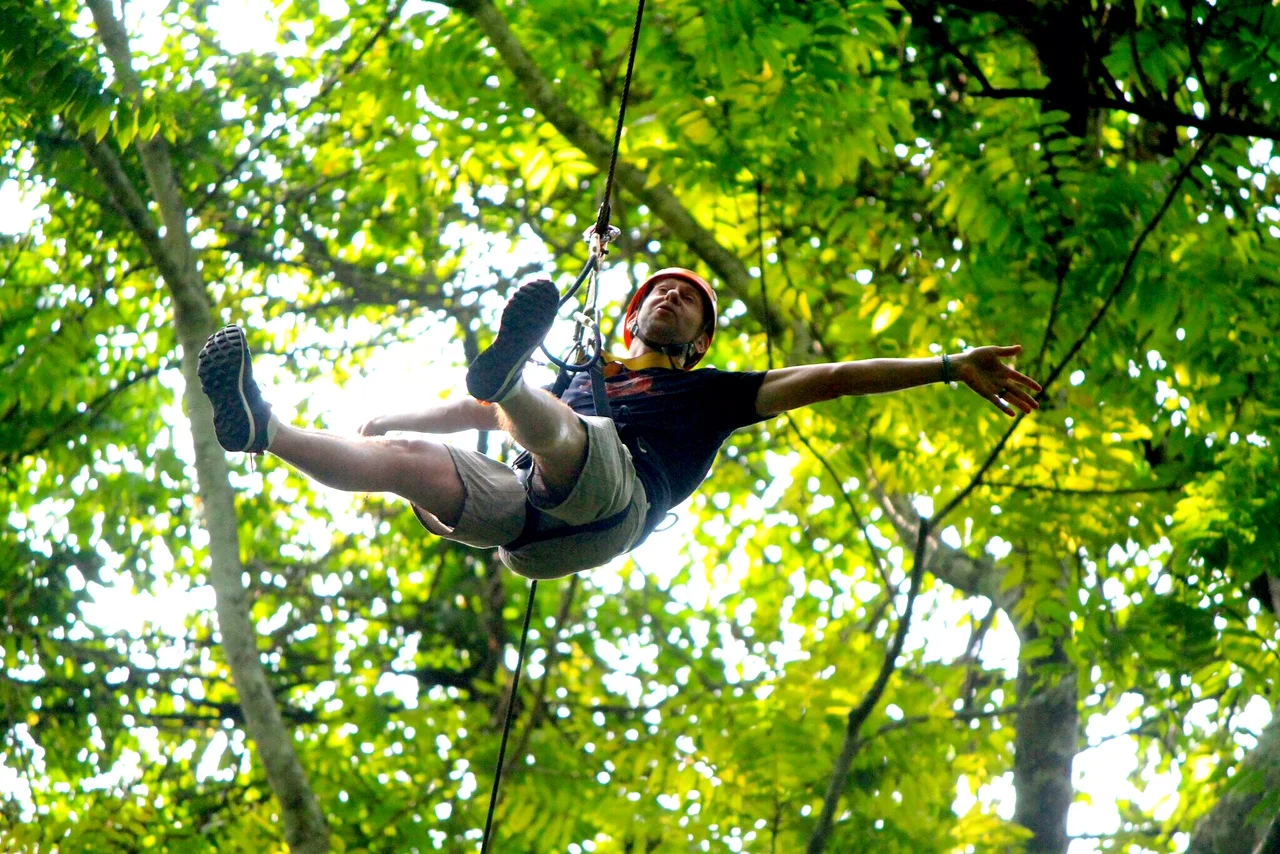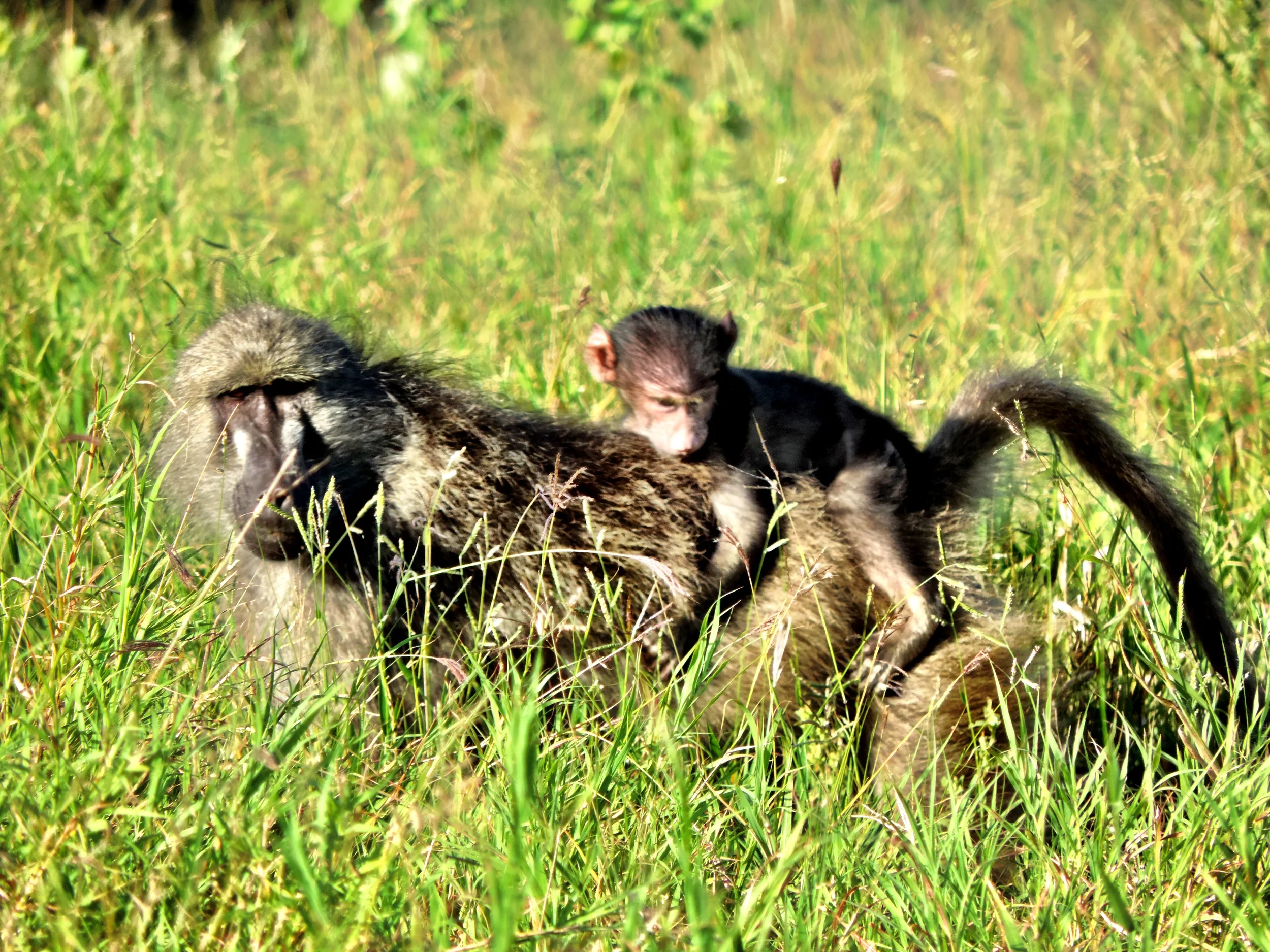6 reasons why you should make ziplining through the rainforest part of your Northern Thailand vacation.
Duke and Wally on one of the two double ziplines at Flight of the Gibbon
Diesel, Wally, Mr. O and Duke still feeling the rush from their ziplining excursion
When we got back from our trip to Chiang Mai, Thailand, one of the first things people asked was, “What was your favorite part?”
There are so many to choose from — my monkey mind buzzes through dazzling, bejewelled Buddhist temples to getting up close and personal with rescued elephants. But one adventure races to the top, so to speak: ziplining through the jungle at Flight of the Gibbon.
“Yes, it’s as intense as it sounds. The ride was so long I had time to panic…and then calm down.”
Making it all the more memorable is the fact that the morning we were there happened to be my birthday.
Here are six reasons why you should choose Flight of the Gibbon as a part of your Chiang Mai itinerary.
Flight of the Gibbons will pick you up and transport you to the jungle
1. A driver picks you up right at your hotel.
They recommended the early morning time slot, as the rainforest tends to be cooler and the gibbons more active.
The downside is that it was too early for breakfast at our hotel. When you’re used to a hearty meal to start your day, as we had become accustomed, it’s jarring to skip any sort of sustenance — not to mention our caffeine fix!
We recommend making sure you’ve got something in your belly before your pickup.
Duke pointed out a pair of engraved buffalo horns in front of our seats in the van with rather angry-looking rats carved onto them. “They just look that way because they haven’t had a cup of coffee,” I grumbled.
The ride takes about an hour and half to the village of Mae Kampong.
Duke and Wally are all geared up and ready to hit the jungle course! (The harnesses are a bit snug in the crotch region, FYI.)
They’ll hook you up with harnesses and helmets
2. Safety is their number-one priority.
We’ve done ziplines and treetop obstacle courses where you’re responsible for hooking yourself in. There’s a fail-safe where the device locks to assure at least one clamp is connected to the wire.
What’s so great about Flight of the Gibbon is that you don’t have to worry about any of that. At every station, there’s an attendant (they call them sky rangers) at either end. One sets you up, straps you in and gives you a push, and the other reminds you to put your feet up and helps catch you, stopping your momentum, at the end of the zipline.
“We want our customers to have fun and be safe, but safety is our first priority,” said Diesel, one of the staff.
3. The sky rangers are hilarious.
As an added bonus, the guys who work there are so goofy, they really set the tone for an enjoyable excursion, allaying any initial fears you may have.
I get vertigo, though there’s something about being strapped into a harness and wire that allows me to actually stand on narrow wooden platforms high above the ground. Maybe it's just that I love the thrill of ziplining so much I don’t allow myself to succumb to vertigo.
At one of the first stations, though, the platform jiggled and I started to panic a bit. But then Diesel came zooming across, doing stunts, his legs on the wire above him.
“I think he’s part gibbon,” I told Duke.
I quickly let go of any fear and gave into the pleasure.
And it wasn’t just Diesel who could have a second career moonlighting as a comedian. At a resting spot, a few groups converged, and we heard another ranger repeatedly calling a British guy Harry Potter. (At one point he even said the levitation spell: Wingardium leviosa!) And when a bright metallic blue beetle buzzed by, he broke into a refrain of the Beatles’ “Let It Be.”
A family of gibbons, including this mother and child, swing in the branches high above you
4. You’ll meet a family of gibbons.
Duke has a thing for primates, and after watching a National Geographic special on Thailand called The Living Edens, he became obsessed with gibbons.
At one point, you do a little hiking. And just when we were getting a bit tired, Diesel called out, “You’re going too fast for me! Let’s take a five-minute rest.”
A roly-poly rolls up into a ball — and became ammunition for a prank amongst the sky rangers
He took the opportunity to teach us a bit about the flora and fauna of the rainforest. He spotted a roly-poly bug, and when he picked it up, it curled into a tight armored ball. Diesel palmed it and kept trying to get other sky rangers to shake his hand and get a surprise bug as part of the deal. Like I said, a real kidder.
Up a hill, you head off to see a group of trees where a family of gibbons resides. There’s one female, with light fur, and three dark-furred males.
Diesel explained the difference between a gibbon and a monkey: Gibbons don’t have tails. Their long limbs are what allow them to swing from treetop to treetop.
Duke is also fond of their distinctive “whoop whoop” call, which we heard in full force later in the morning.
5. One of the ziplines is half a mile long!
At 800 meters, it’s the longest and fastest of the bunch. And, yes, it’s as intense as it sounds. The ride was so long I had time to panic…and then calm down.
See that glow on our faces? That’s the post-ziplining bliss
Wally is giddy — ziplining through the jungle was a fab way to spend his birthday!
6. It’s the thrill of a lifetime.
There are 30 stations, the majority of which are ziplines — with the highest one almost 100 feet up!
A map of the 30 stations you’ll work your way through at Flight of the Gibbon
Whee! Duke rappels at one of the stations
If you’ve never been ziplining, it's high time you tried. If you have, then you probably understand the rush of adrenaline that comes when you soar through the treetops. It’s the closest to flying I’ll ever get. –Wally


